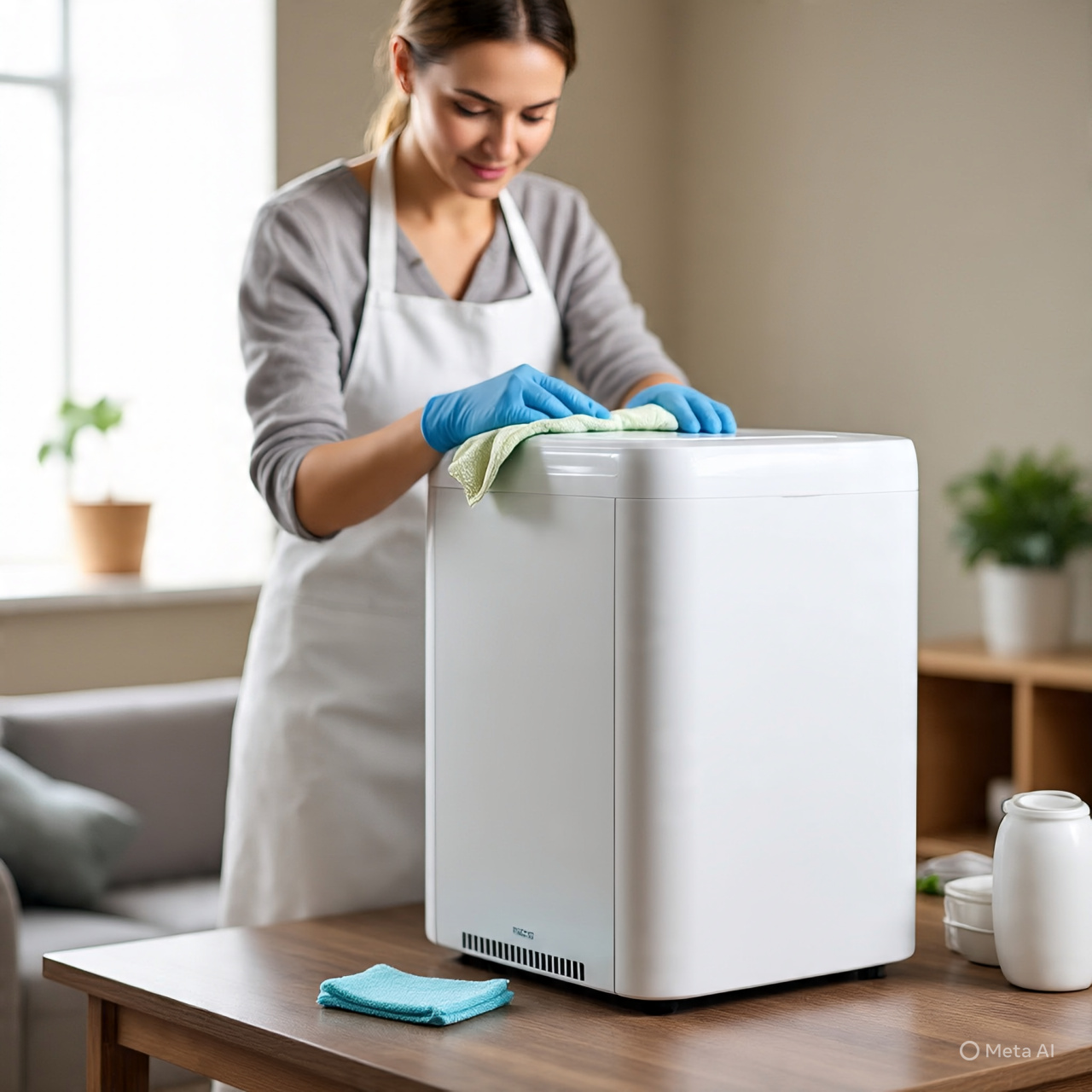Whether battling seasonal humidity, persistent condensation, or indoor air quality issues, your dehumidifier is working hard behind the scenes. But just like any other appliance, it needs regular care to perform at its best. A dirty dehumidifier can become a breeding ground for mould, bacteria, and allergens – exactly what it’s meant to remove.
This guide will walk you through how to clean your dehumidifier, prevent mould growth, and keep your home’s air fresh and healthy.
What You’ll Need:
- Soft microfiber cloth
- Mild dish soap
- Surface spray or white vinegar
- A small brush or an old toothbrush
- Gloves (recommended if cleaning mould)
![[MK] Draft: How to Clean a Dehumidifier](https://www.market.com/wp-content/uploads/2025/08/-mk-draft-how-to-clean-a-dehumidifier-1.png)
How to Clean a Dehumidifier: Step by Step
Step 1: Unplug and Disassemble
![[MK] Draft: How to Clean a Dehumidifier](https://www.market.com/wp-content/uploads/2025/08/-mk-draft-how-to-clean-a-dehumidifier-2.png)
Carefully unplug your dehumidifier.
- Remove the water tank, air filter, and any detachable accessories or panels.
- Place all removable parts on a clean, dry towel or kitchen cloth.
- Allow the unit to cool if it was recently used, or defrost it if it has been recently used in a very cold environment.
Step 2: Clean the Water Tank
![[MK] Draft: How to Clean a Dehumidifier](https://www.market.com/wp-content/uploads/2025/08/-mk-draft-how-to-clean-a-dehumidifier-3.png)
- Use warm water and mild dish soap to scrub the tank.
- If there’s visible residue or a musty smell, add white vinegar to help disinfect.
Step 3: Wipe the Exterior
![[MK] Draft: How to Clean a Dehumidifier](https://www.market.com/wp-content/uploads/2025/08/-mk-draft-how-to-clean-a-dehumidifier-4.png)
- Dust and wipe down the exterior with a damp microfiber cloth.
- Gently clean the vents with a toothbrush or cotton swabs.
Step 4: Clean or Replace the Filter
![[MK] Draft: How to Clean a Dehumidifier](https://www.market.com/wp-content/uploads/2025/08/-mk-draft-how-to-clean-a-dehumidifier-5.png)
- Check the manual to see if your filter is washable or disposable.
- For washable filters, rinse under warm water and let them air dry completely before reinstalling.
Tip: If you’re using your dehumidifier regularly, the filter should be cleaned every two weeks using a damp cloth
Step 5: Disinfect Internal Components
![[MK] Draft: How to Clean a Dehumidifier](https://www.market.com/wp-content/uploads/2025/08/-mk-draft-how-to-clean-a-dehumidifier-6.png)
Dip a cloth or brush in a 1:1 vinegar-water mix to gently wipe down interior surfaces. This prevents bacteria and mould from building up over time.
How to Clean Mould Off a Dehumidifier
Mould can form everywhere, from the water tank and filter to internal coils. It may appear black, green, or slimy, and often smells musty.
Step-by-step mould removal:
- Depending on the extent of the mould, wear protective gloves.
- Empty and rinse the tank.
- Mix one part white vinegar with one part warm water.
- Scrub mouldy surfaces using a brush.
- Spray and wipe down the parts with a gentle surface spray and a damp cloth.
- Rinse thoroughly and let all parts dry fully before reassembly.
Tip: For persistent mould, a hydrogen peroxide spray (3%) can be effective without the harshness of bleach.
Deep Cleaning vs. Regular Cleaning
Use this table to see when and how to clean your dehumidifier.
Signs Your Dehumidifier Needs Cleaning
While cleaning your dehumidifier regularly is recommended to enhance its performance, certain signs can tell you your dehumidifier needs cleaning. These include:
- Musty or unpleasant smells
- Decreased moisture removal
- Noisy operation or rattling
- Visible dust or mould buildup
- Condensation forming on surfaces nearby
Tip: Add a calendar reminder to inspect and regularly clean your unit to extend its lifespan.
Troubleshooting After Cleaning
- The unit won’t power on? Double-check that it’s plugged in and components are fully dry.
- Strange noise? Reinstall all panels and filter securely.
- Still smells musty? Repeat the tank and filter cleaning with vinegar.
Tip: Search for the instruction manual or cleaning tips on your dehumidifier manufacturer’s website if you’re unsure or experiencing issues.
FAQs
Can I use bleach to clean my dehumidifier?
How often should I clean my dehumidifier?
Can I clean the air filter with water?
What should I do if I notice mould in my dehumidifier?
What should I do if my dehumidifier is leaking?
Check the tank position and ensure drainage components are clean and properly sealed.
A clean dehumidifier is a healthy dehumidifier. With just a little upkeep, you can improve your indoor air quality, extend your dehumidifier’s life, and keep your home feeling fresh and comfortable. Don’t let what’s meant to protect you become a hidden source of contamination.



